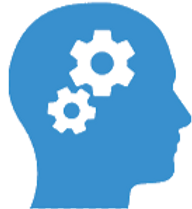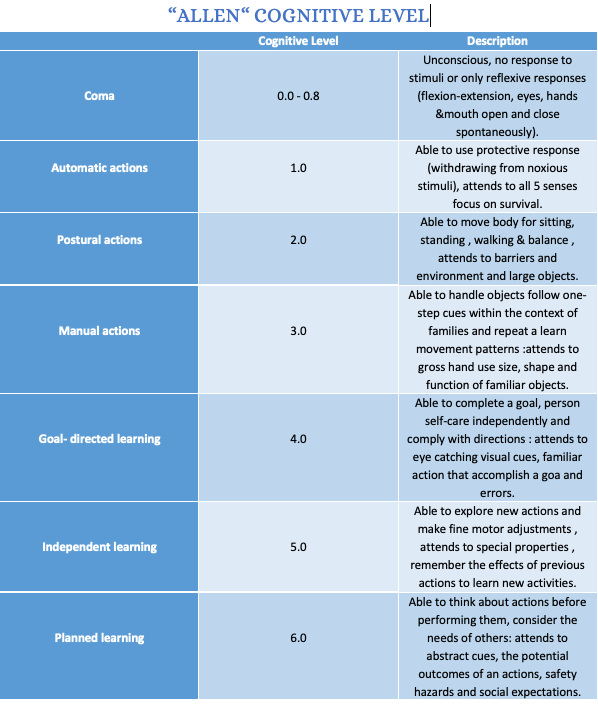Cognitive disability and FOR was developed by Clondia K. Allen.
It was developed to conceptualise intervention strategies for people who, as a result of brain pathology, are not able to carry out their normal life activities.
According to Allen, cognitive disability represents a physical or biochemical restriction in the information processing capacities of the brain that produces, observable, miserable limitations in routine task behaviours.
Theoretical base –
The cognitive disability FOR derived its theoretical base from research in the field of neurosciences, information processing, cognitive pathology and biological psychiatry.

Assumptions –
-
The severity of a mental disorder can be judged by the consequences, it has on a person’s capacity to think, do and learn.
-
Mild mental disorders can be compensated for by learning psychological substitutes for normal mental processes.
-
Severe mental disorders can be associated with limited mental abilities that can not be corrected by what the person says or does.
-
Severe mental disorders can be compensated for by providing an environmental substitute for normal mental processes and identifying normal processes that can still be used.
-
The remaining mental abilities can be engaged in doing realistic activities that are meaningful to the client, practical for caregivers and sustainable over time.
-
When people are unable to learn to use psychological compensation effectively, environmental compensation can improve the quality of life for them and their long-term caregivers.
Domains of concern –

1. All performance areas.
-
Activities of daily living (BADL & IADL)
-
Social
-
Education
-
Participation
-
Leisure
-
Work
2. Process skills or cognition
3. Routine habits
4. Physical and social context
5. Analysis of activity demand
Assessments –
-
Allen cognitive level screen
-
Routine task inventory
Postulates regarding change –
Two postulates –
-
Chains to capacity
-
Environmental changes.
Strength of the FOR –
-
Using the cognitive disability model is an effective way of quickly identifying a disruption in cognition as it relates to daily function.
-
If a change in the underlying mental structures is desired, this model can measure the change.
Limitations –
-
The concepts related to the higher cognitive levels within this model are not well articulated and hence the confusion.
-
Examples of facilitating clients with higher cognitive disabilities are needed.
-
Allen’s Cognitive Level-



